Commentary: Some of the Country’s Top Cigar Bars
11 Jun 2012
Smoke-filled rooms are a thing of the past. With advanced air-filtration systems, comfortable elbowroom, and high definition televisions on every wall, today’s cigar bars have become havens for aficionados to come together and enjoy their pastime in a friendly, upscale environment. A good cigar bar resembles the world’s greatest playroom: free WiFi, Nintendo Wii, pool tables, live music, quality food and drink, a friendly and knowledgeable staff, a full calendar of events, and, of course, a walk-in humidor with a bountiful selection.
It’s a world of great company. A specialized club with unspoken rules. A place where one can sit in peace with a cigar to watch the local sports game, enjoy a good read, or catch up with a friend. For some folks, cigar bars have become a regular hangout. Here are some of the best in the country:
Velvet Cigar Lounge, New York City
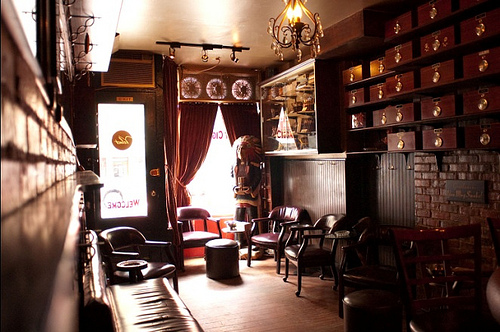
You can bring your own beverage to this classic club in Manhattan’s East Side Village. Its brick walls and warm environment provide city slickers with a perfect place to relax. And there’s more. This lounge sells their own private boutique brand of cigars in their store, and those cigars get pretty good reviews. (80 E. Seventh St.; 212-533-5582; velvetcigars.com)
Burn by Rocky Patel, Naples
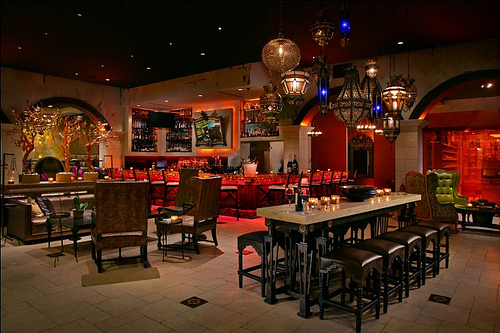
This exotic Asian/Mediterranean/Caribbean influenced lounge is owned by Rocky Patel and features his complete line plus a selection of pre-embargo Cuban cigars. A vintage H. Upmann goes for $200 per stick or the big spenders can pick up a box of old Montecristos for $12,500. (9110 Strada Pl; 239 653-9013; burnbyrockypatel.com)
Grand Havana Room, Beverly Hills
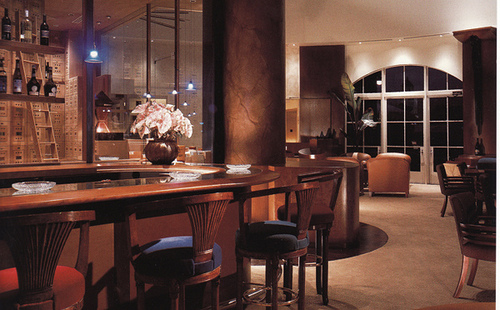
It’s members only at this private club, a home to many of Hollywood’s elite. The centerpiece is a glassed-in humidor with 350 private lockers, each fixed with a brass nameplate etched with their owner’s name. With a private elevator and a calendar filled with special events, this secret cigar lair is one of the nation’s most high-end cigar clubs. (301 N. Canon Dr.; 310-385-7700; grandhavana.com)
Shelly’s Back Room, Washington, D.C.
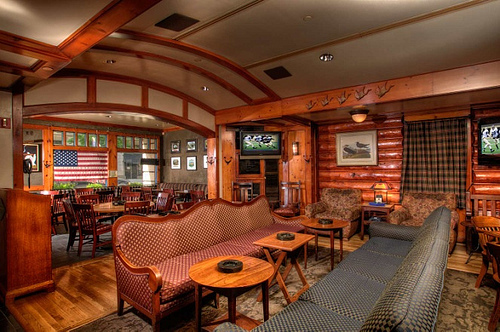
You might run into one of our beloved leaders at the most popular cigar spot in the nation’s capital. Shelly’s has a full bar and a menu with everything from wings to bacon-wrapped shrimp. This casual yet elegant cigar lounge features eight large screen televisions and a special selection of rare cigars, including 10 of Cigar Aficionado’s Top 25. (1331 F St. NW; 202-737-3003; shellysbackroom.com)
photo credit: Various

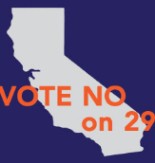 Those of us who follow cigar rights issues won’t be surprised to learn that anti-tobacco politicians, groups, and other zealots are aiming to curtail the sale and enjoyment of cigars through radically high taxes—particularly in California. While few will come right out to admit it (at least for now), the goal of many of these extremists is to completely wipe tobacco from the face of the planet.
Those of us who follow cigar rights issues won’t be surprised to learn that anti-tobacco politicians, groups, and other zealots are aiming to curtail the sale and enjoyment of cigars through radically high taxes—particularly in California. While few will come right out to admit it (at least for now), the goal of many of these extremists is to completely wipe tobacco from the face of the planet.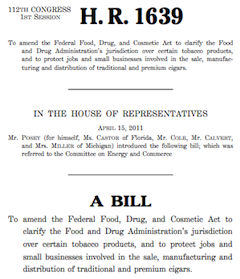 I believe enactment of this legislation would offer extraordinary protection for cigars smokers and the cigar industry. By recognizing a specific category for premium cigars, it would make it easy to exclude them from future tobacco taxes and restrictions.
I believe enactment of this legislation would offer extraordinary protection for cigars smokers and the cigar industry. By recognizing a specific category for premium cigars, it would make it easy to exclude them from future tobacco taxes and restrictions.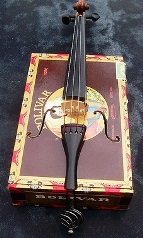 Foremost among the musicians in the cigar world undoubtedly is Avo Uvezian. The pianist, performer, and composer has an eponymous line of top-flight cigars created with master blender Hendrik Kelner and Davidoff. Avo also has created a unique aura with his wide-brimmed hats, white suits, and association with “Strangers In the Night.†Lucky is the smoker who’s able to attend an event where it’s possible to light up an Avo and hear the octogenarian entertain at the keyboard.
Foremost among the musicians in the cigar world undoubtedly is Avo Uvezian. The pianist, performer, and composer has an eponymous line of top-flight cigars created with master blender Hendrik Kelner and Davidoff. Avo also has created a unique aura with his wide-brimmed hats, white suits, and association with “Strangers In the Night.†Lucky is the smoker who’s able to attend an event where it’s possible to light up an Avo and hear the octogenarian entertain at the keyboard.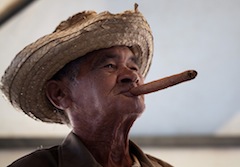 I am as guilty as most, if not more so, of seeking the new, the different, and the as-yet-to-be-smoked. Writing for StogieGuys.com, I consider it my duty to report on cigars that our readers might not have tried. Since I rarely light up more than six or seven sticks per week, that increases the pressure to search the humidor for untried cigars whenever I visit a B&M.
I am as guilty as most, if not more so, of seeking the new, the different, and the as-yet-to-be-smoked. Writing for StogieGuys.com, I consider it my duty to report on cigars that our readers might not have tried. Since I rarely light up more than six or seven sticks per week, that increases the pressure to search the humidor for untried cigars whenever I visit a B&M. The Executive is a double corona that measures 7.5 inches long with a ring gauge of 50. To see how the two varieties stack up in this format, I bought one Maduro and one Natural at a tobacconist in downtown Chicago. The cost was $7 each.
The Executive is a double corona that measures 7.5 inches long with a ring gauge of 50. To see how the two varieties stack up in this format, I bought one Maduro and one Natural at a tobacconist in downtown Chicago. The cost was $7 each.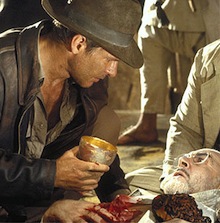 Frankly, many of the cigars available in Empire’s auction were cigars that I don’t think necessarily benefit from more age. (High-end Fuente-made smokes like the Opus X, Añejo, and Ashton VSG often lose flavor after a few years, in my opinion, because the tobacco is already extensively aged.) But that doesn’t mean there aren’t old, hard-to-find cigars that I wouldn’t snap up in a second.
Frankly, many of the cigars available in Empire’s auction were cigars that I don’t think necessarily benefit from more age. (High-end Fuente-made smokes like the Opus X, Añejo, and Ashton VSG often lose flavor after a few years, in my opinion, because the tobacco is already extensively aged.) But that doesn’t mean there aren’t old, hard-to-find cigars that I wouldn’t snap up in a second. Patrick Ashby
Co-Founder & Editor in Chief
Patrick Ashby
Co-Founder & Editor in Chief Patrick Semmens
Co-Founder & Publisher
Patrick Semmens
Co-Founder & Publisher George Edmonson
Tampa Bureau Chief
George Edmonson
Tampa Bureau Chief